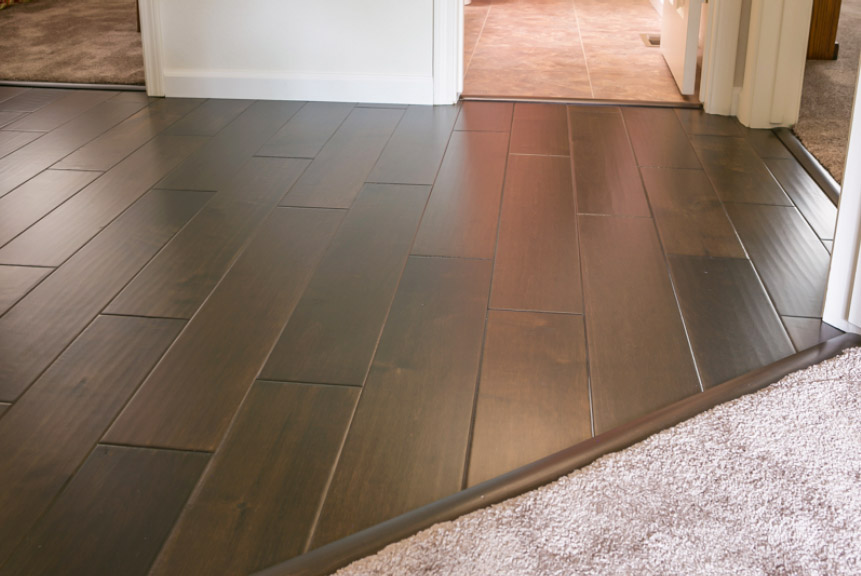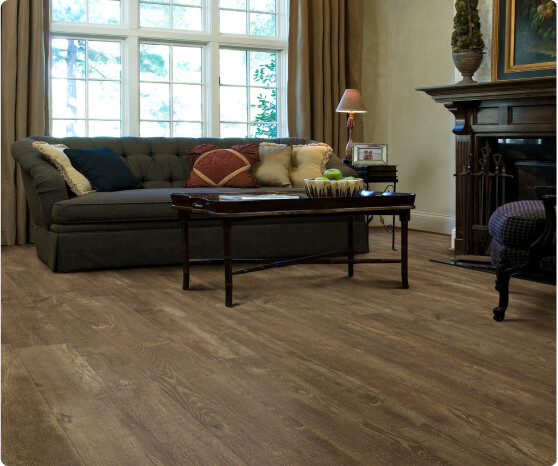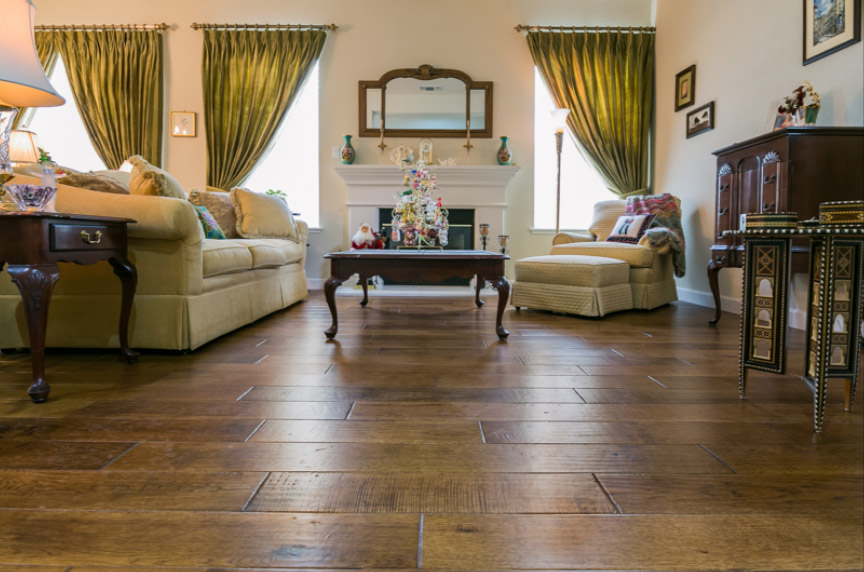Underlayment is a crucial component. It offers a multitude of benefits that enhance the overall performance and lifespan of your laminate floors. Understanding the importance of underlayment is essential for a successful installation project.
One key benefit of underlayment is its ability to act as a barrier between the subfloor and the laminate flooring material. This helps prevent moisture-related problems, such as warping and buckling, which can occur when laminate flooring comes into direct contact with the ground. Underlayment provides sound insulation, reducing noise transmission from foot traffic or other sources.
Different types of underlayment offer varying advantages depending on your specific needs. Some types provide thermal insulation, making your room more energy-efficient. Others feature moisture resistance properties or include vapor barriers to protect against potential water damage.
Investing in quality underlayment not only improves the performance and durability of your laminate flooring but also saves you money in the long run by preventing costly repairs. So, before embarking on your laminate flooring project, consider the benefits that underlayment can bring to ensure a smooth and long-lasting floor installation.

Table of Contents
ToggleUnderstanding Laminate Underlay
What It Is And How It Works
Laminate underlayment is a thin layer that is placed between the subfloor and the laminate flooring. Its purpose is to act as a cushioning barrier, providing support and stability to the floor. By absorbing impact, it helps to reduce noise and create a smooth surface for installation.
Importance For Laminate Flooring
The benefits of underlayment for laminate flooring are significant. Firstly, it plays a vital role in extending the lifespan of the laminate flooring itself. By acting as a moisture barrier, underlayment helps to prevent damage caused by moisture from reaching the laminate planks. This is especially important in areas such as bathrooms or basements where moisture levels can be higher.
Underlayment reduces stress on joints, preventing cracks or warping in the laminate flooring over time. The cushioning effect provided by underlayment helps to absorb pressure and distribute weight evenly across the floor surface.
When Underlayment Is Not Necessary
While underlayment is generally recommended for laminate flooring installations, there are instances where it may not be necessary depending on the type of subfloor being used.
Concrete subfloors typically require underlayment due to their hardness and lack of insulation properties. Concrete can transmit sound easily, so using an underlayment with sound-dampening qualities can significantly reduce noise levels.
On the other hand, plywood or wooden subfloors may not need additional underlayment if they already provide sufficient support and insulation properties. In such cases, installing laminate flooring directly onto these types of subfloors can still result in a stable and durable floor surface.
Benefits Of Using Underlayment
Noise Reduction And Soundproofing
Underlayment offers several benefits. One significant advantage is its ability to reduce noise transmission. By adding an extra layer between the subfloor and laminate, underlayment absorbs sound vibrations, making your floor quieter to walk on. This feature is especially beneficial for apartments or multi-story buildings where minimizing noise is important.
Insulation And Comfort Enhancement
Another advantage of using underlayment for laminate flooring is the insulation it provides. The underlayment’s thermal properties help keep your space warm during colder months by preventing cold air from seeping through gaps in the subfloor. Walking on a laminate floor with underlayment feels more comfortable due to its cushioning effect. It adds a layer of softness that enhances the overall comfort of your flooring.
Protection Against Wear And Tear
Underlayment acts as a protective barrier against wear and tear caused by foot traffic. As you walk on your laminate floor, the underlayment helps distribute weight evenly, reducing the impact on the flooring material itself. This protection ensures that your laminate floor maintains its appearance and durability over time, even in high-traffic areas.
Using underlayment can also extend the lifespan of your laminate flooring by providing an extra layer of support against potential damage from furniture or heavy objects being moved across the floor.
Moisture Barrier
In addition to noise reduction, insulation, and protection against wear and tear, some types of underlayment also act as a moisture barrier. This feature prevents moisture from seeping into the subfloor and causing damage to both the subfloor and laminate flooring above it. By adding this extra layer of protection, you can safeguard your investment in laminate flooring from potential water-related issues such as warping or mold growth.
Easy Installation
Underlayment for laminate flooring is typically easy to install due to its lightweight and flexible nature. It often comes in rolls or sheets that can be easily cut to fit the dimensions of your room. Many underlayment options also feature adhesive strips or tape for secure attachment, ensuring a hassle-free installation process.
Moisture Management With Underlayment
Underlayment plays a crucial role in preventing damage to laminate flooring by effectively managing moisture. It acts as a protective barrier, keeping moisture from seeping into the laminate and causing potential harm.
One of the primary benefits of underlayment is its ability to prevent moisture damage. By creating a moisture barrier, it ensures that any spills or accidents on the surface are not immediately absorbed by the laminate flooring. Instead, the underlayment acts as a buffer, giving you time to clean up without worrying about immediate consequences.
Not only does underlayment protect against major spills, but it also guards against minor incidents that may go unnoticed at first. For example, if water from wet shoes or pets’ paws is tracked onto the floor, underlayment can help prevent this moisture from penetrating the laminate and causing long-term damage.
By acting as a shield against moisture, underlayment helps maintain the aesthetic appeal of your laminate floors. Without proper protection, excess moisture can lead to warping, buckling, or even mold growth in extreme cases. These issues not only compromise the appearance of your flooring but can also pose potential health risks.
In addition to preventing damage caused by liquid spills and humidity, underlayment also provides insulation properties for your floors. It helps reduce noise transmission between levels of your home and provides a cushioning effect when walking on the laminate surface.
To ensure optimal protection for your laminate floors, it’s essential to choose high-quality underlayment specifically designed for this purpose. One such example is Timbermate Excel Underlay – known for its excellent moisture resistance capabilities and durability.
Installation Considerations For Underlayment
Proper Techniques For Laying Down
When installing underlayment for laminate flooring, it is essential to follow the correct techniques to ensure optimal performance. By adhering to manufacturer guidelines and paying attention to important details, you can achieve a successful outcome.
Following the manufacturer’s guidelines is crucial for achieving proper results during installation. These guidelines provide specific instructions on how to prepare the subfloor, lay down the underlayment, and install the laminate flooring on top. By carefully following these instructions, you can avoid potential issues and ensure that both the underlayment and laminate flooring function as intended.
Paying attention to details like seams, overlaps, and adhesive usage guarantees a successful outcome. When laying down underlayment, it is important to properly align and secure each piece. This ensures that there are no gaps or uneven areas that could affect the stability of the laminate flooring. Overlapping the underlayment sheets correctly helps create a seamless surface for your flooring installation.
Using adhesive in accordance with manufacturer recommendations is another crucial aspect of proper installation. Adhesive helps hold the underlayment in place and prevents any shifting or movement during installation. Following the specified adhesive usage guidelines ensures that your underlayment remains securely attached to the subfloor.
By employing these proper techniques when laying down underlayment for laminate flooring, you can enhance its overall performance and longevity. Taking care during installation not only improves stability but also provides a smooth surface for your laminate flooring.
Remember that each step in the installation process plays a vital role in ensuring a successful outcome. From preparing the subfloor to securing each piece of underlayment properly, every detail matters.
Conclusion
In conclusion, laminate underlayment offers a range of benefits that make it an essential component of any laminate flooring installation. By providing a cushioning layer, underlayment helps to reduce noise transmission, creating a quieter and more comfortable living space. Underlayment acts as a moisture barrier, preventing water damage and prolonging the lifespan of the laminate flooring. It also helps to even out minor imperfections in the subfloor, ensuring a smooth and level surface for the laminate planks.
To maximize the benefits of underlayment for laminate flooring, it is important to choose the right type of underlayment based on factors such as subfloor condition, desired sound reduction, and moisture resistance. Consulting with flooring professionals or manufacturers can provide valuable guidance in selecting the most suitable underlayment for your specific needs.
By investing in high-quality underlayment and following proper installation techniques, you can enhance the performance and longevity of your laminate flooring. So don’t overlook the importance of underlayment when planning your next flooring project.
Struggling To Find The Perfect Laminate Flooring That Aligns With Your Unique Vision?
Located in the bustling heart of Concord, California, K Floors is your ultimate destination for turning your vision into reality when it comes to laminate flooring. We’re not just another flooring company; we’re your trusted partners in crafting spaces that radiate quality, dependability, and an unparalleled selection. Whether you’re envisioning the timeless allure of laminate wood, the rustic charm of textured laminates, or the contemporary sophistication of high-gloss laminates, our range is as diverse as your creative imagination.
The K Floors distinction is unmistakable. Say goodbye to the uncertainty of selecting the perfect laminate flooring. Our team of seasoned experts is dedicated to guiding you every step of the way. From complimentary in-home consultations, where we bring our expertise right to your doorstep, to our collaborations with leading laminate suppliers, we ensure that excellence isn’t just a promise—it’s our legacy. Explore our extensive collection, showcasing a variety of laminate options, including Wood-Look, Textured, High-Gloss, and more. Your ideal floor isn’t merely a purchase; it’s a carefully curated choice.
At K Floors, we’re committed to delivering an experience, not just a transaction. Rooted in Concord, California, we’ve seamlessly blended traditional craftsmanship with modern aesthetics, ensuring that each laminate we install transforms your space into a place that truly feels like home. Whether you’re embarking on a residential renovation or a commercial transformation, every project we undertake reflects our unwavering commitment to quality and authenticity. So why delay? Step into K Floors, and let’s embark on the journey to your perfect laminate flooring together.
Disclaimer
The materials available on this website are for informational and entertainment purposes only and not to provide legal advice. You should contact your attorney to obtain advice concerning any particular issue or problem. You should not act or refrain from acting based on any content included in this site without seeking legal or other professional advice. The information presented on this website may not reflect the most current flooring developments. No action should be taken in reliance on the information contained on this website and we disclaim all liability concerning actions taken or not taken based on any or all of the contents of this site to the fullest extent permitted by law.




